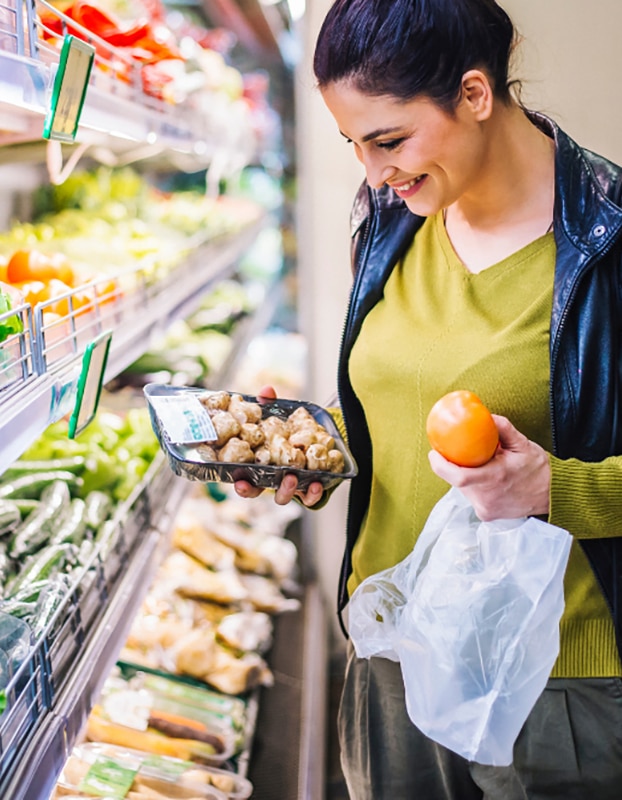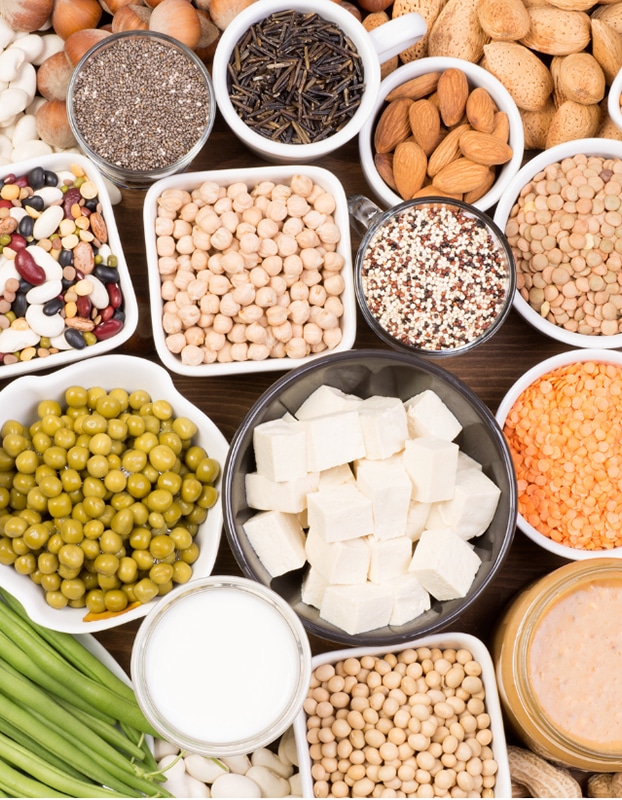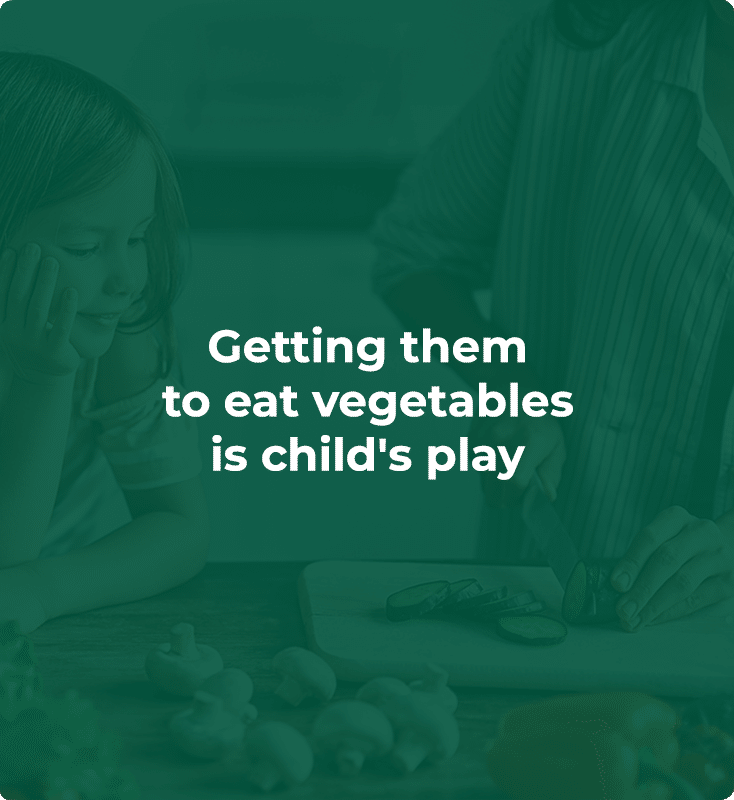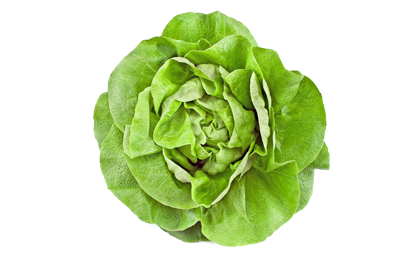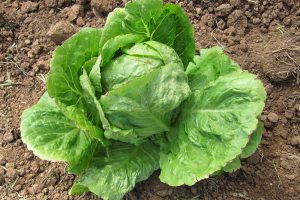Recipes we love
See all recipesStrawberry and lettuce salad
Strawberries are rich in vitamin C, making this lettuce salad both healthy and enjoyable to eat....
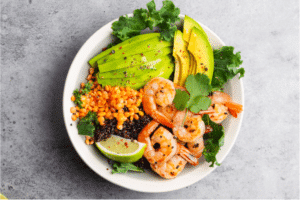
Prawn and avocado salad
This combination of fruit and vegetables provides a tasty dish packed with vitamins, giving you valu...
HEALTH
BENEFITS
Packed with provitamin A !
A serving of lettuce is enough to cover half your daily value of provitamin A and beta-carotene! The body transforms the latter into vitamin A. Vitamin A plays a role in iron metabolism, skin and mucous membrane health, eyesight, immunity, and growth.
Lettuce is also :
- a source of vitamin B9(folic acid), which is very important during the first trimester of pregnancy, but also for cellular renewal, for immunity, and for the proper functioning of the immune and psychological systems
- a source of vitamin C, which is a very important vitamin, as it regulates the immune system, supports the nervous system to function well, can reduce fatigue and protect the body against oxidative stress
- Some varieties of lettuce are rich in vitamin C and vitamin
NUTRITIONAL
COMPOSITION
WHEN IS THE RIGHT
TIME TO EAT LETTUCE?
Spring and summer.
The heart of the lettuce season runs from May to September.
VEGETABLE PATCH
OR URBAN BALCONY?
Lettuce is an annual plant that grows well in full sun, in cool, light soil rich in humus. The sowing periods vary depending on the lettuce. Spring lettuces, summer lettuces, and winter lettuces all have different periods: their seeds are sown in February, in March, and in August/September, respectively.
To learn everything you need to know about growing lettuce in your garden or on your balcony, read the page on growing advice.
CHOOSING
AND STORING LETTUCE
Choose your lettuce well :
- Leaves should be firm, not wilted, and should not be spotted.
- The base should be white and moist.
Store your lettuce properly :
- Away from light:otherwise it will rapidly lose its vitamin C and vitamin B9.
- In the refrigerator:Three to four days in the vegetable drawer, in a perforated bag. Storing lettuce chopped in a sealed containerwill help it keep longer.
- In the freezer:only if it is cooked!
ANTI-WASTE TIPS
The whole of a lettuce can be eaten! The outside leaves and those leaves that do not look so nice can be cooked.
QUEL EST SON IMPACT ENVIRONNEMENTAL
The Product Environmental Footprint (PET) tells us more! This is a score, calculated by Agribalyse*, which takes into account all of the stages of a vegetable’s life cycle: how it is grown, the impact of transport and processing, and so on. The lower the score, the lower the environmental impact.
- Lettuce, raw: 0.12
- Beefsteak, raw: 2.70
*Data taken from the Agribalyse database, which records the environmental score of food items. This unique score is an average of 16 indicators, calculated according to the European PEF methodology. It does not correspond to an environmental label or “eco-score”.
CO2 equivalent: For 100 g of raw lettuce: 0.23 kg of CO2e, which is the same as 8 g of raw beefsteak.
TIPS
AND TRICKS
How to cook lettuce
First cut out the core and remove any damaged leaves. Quickly wash it at the last minute and be sure to spin-dry it thoroughly; vinaigrette will stick better to dry leaves (and will have more taste).
Cooking time :
Yes, you can eat cooked lettuce too—and it’s delicious! Fancy trying it? It’s really quick and easy to prepare!
- 2 to 3 min: steamed
- 5 min: in a saucepan
Did you know? A vinaigrette increases the nutritional benefit of lettuce! Why? The body can better absorb carotenoids, including beta-carotene, when a small amount of fat is consumed at the same time. You’ll benefit even more if you pick an oil such as soy, walnut, or canola oil, which all provide alpha-linolenic acid, an important omega-3 fatty acid.
Lettuce goes well with…
Raw: The possibilities are endless! Lettuce can simply be eaten with a vinaigrette and aromatic herbs, but it also goes well with many other ingredients: ham, seafood, warm goat cheese, camembert, tomatoes, carrots, beetroot, corn, avocados, apples, dried fruits, and more. The only limit is your imagination!
Cooked: It can be combined with peas and carrots as a side dish with lamb or added to a soup with other vegetables (leeks, broccoli, spinach, zucchini, etc.).
A great combination: steak and salad When eaten together, beef and lettuce provide you with two compounds that your red blood cells need, iron and vitamin B9 (folic acid) respectively.
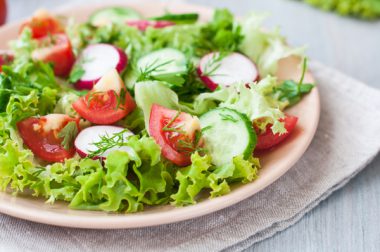
CAN EVERYONE
EAT IT?
Young children
If it is cooked, for example in a soup, or chopped into small pieces, lettuce can be eaten from the age of 6 months. Raw whole lettuce leaves are difficult to chew and therefore should not be fed to infants under the age of 12 months.
And everyone else
No matter your tastes, you’re sure to find a lettuce recipe that’s right for you!
See plenty of other tips for encouraging children to eat vegetables
WHERE DOES IT COME FROM?
ORIGINS AND VARIETIES
Origins of lettuce
China is the number one lettuce producer in the world, followed by the United States, India, and Europe. The top three lettuce producers in Europe are Spain, Italy, and France.
Varieties
The Lactuca genus has over 100 species. However, there are five main varieties of cultivated lettuce:
- Head lettuce is the most commonly eaten and has a very dense, apple-shaped heart.
- Batavia lettuce, a close relative of head lettuce, is distinguished by its thicker leaves and its resistance to drought.
- Oakleaf lettuce has very tender leaves and Lollo Rossa has beautiful curly and colorful leaves.
- Romaine lettuce has long leaves with wide, curved sides.
- Celtuce or stem lettuce, sometimes also called Chinese lettuce, is mainly eaten in eastern Asia. Its stems are eaten cooked or raw, while the leaves are eaten cooked. This lettuce has a rich taste of celery and asparagus.



 Artichoke
Artichoke  Celery
Celery  Vegetable garden: growing Chinese artichoke
Vegetable garden: growing Chinese artichoke 


